Translations 677
A World Without Movie Screens
A World Without Movie Screens
 by Julio Martinez Molina
by Julio Martinez Molina
Audiovisual critic and journalist, member of the Cuban Association of the Film Press and UNEAC. Author of the books published on film criticism in North America and the end of the century, Causes and Influences of Contemporary Cinema and Haikus of My Filmic Emotion. From his blog, La Viña de los Lumiere
March 16, 2020
Translated and edited by Walter Lippmann for CubaNews
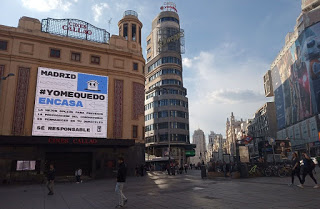 Whether or not it is a bacteriological weapon of the United States aimed at slowing down China’s advance, the coronavirus has seriously affected the world economy; especially that of Washington’s main rival, yes, but its overall effects reach a planetary scale, including the northern nation itself.
Whether or not it is a bacteriological weapon of the United States aimed at slowing down China’s advance, the coronavirus has seriously affected the world economy; especially that of Washington’s main rival, yes, but its overall effects reach a planetary scale, including the northern nation itself.
The saddest images of the harshest dystopias are now verified, not in book pages but in real scenarios characterized by desolation. What happened or is happening in nations such as China, Iran, Italy and Spain surpasses any science fiction or fantasy narrative.
A world on edge sees closed borders, has confined millions of citizens, separated regions and blocked the entry of tens of thousands of people.
This attack on humanity does not understand geography, economic classes, or climate. Nor of fields, sectors, industrial universes and the entertainment industry. The latter is experiencing a very strong contraction at a global level, except in streaming giants such as the American platform Netflix or in the pornography industry, an emporium that annually moves more money in the US than the NBA. The same coronavirus has even been a callous theme in several “adult films”.
Now, beyond such exceptions or others very pointed, the turn suffers the biggest cliff in its history. The plunge in ticket sales meant a 45 percent drop this weekend in the U.S. and Canada. In the main cities of both nations, theaters were closed during the night of Sunday the 15th. The start of the closures was marked by China on February 2, when the Alliance of Radio, Film and Television Production Committee and the Federation of Radio and Television Association directed film companies, production teams, actors and actresses to cease work.
Both there and in the US, India (the country that produces the most films per year in the world), France, Spain and Italy paralyzed film activity. The Los Angeles Times reports that “the Fast & Furious franchise has decided to postpone the release of its ninth film for a full year. Neither will the new James Bond film, No Time To Die, a decision made several weeks ago to postpone the release from April to October. For its part, the Disney giant’s coronavirus agenda could not have been worse: Its big bet for spring was the new version of Mulan, a film that, for obvious reasons, has the Asian market as its main focus.
“After postponing Mulan’s global release and closing its theme parks, Disney has taken another drastic decision to curb the coronavirus: to suspend production of all its films, with animation as an exception. This way, the new version with real actors of The Little Mermaid will delay its shooting, which was going to start soon in London, as well as William of the Bull’s thriller Nightmare Alley, Ridley Scott’s drama The Last Duel and the next installment of Home Alone. The new Peter Pan and Wendy, as well as Shrunk, a sequel to the 1980s classic Honey, I Shrunk the Kids, were also delayed, although both were in early pre-production.
“Disney’s decision affects a large number of studios the company owns, such as Fox and Searchlight. Marvel, also under its control, suspended the filming of Shang-Chi and The Legend of the Ten Rings, after its director, Destin Daniel Cretton, has been isolated by his own decision. The Mickey Mouse factory has also suspended some 16 television pilots for the same reasons. They have also interrupted filming in other different studios such as Mission: Impossible in Italy, Official Competition – with Penelope Cruz and Antonio Banderas – in Spain, and The Amazing Race” competition around the world. And preparations for filming the biography of Elvis Presley have been slowed down after one of his protagonists, Tom Hanks, tested positive for the coronavirus in Australia,” says the half-Angelian.
Shooting on Sony’s Budapest-based The Nightingale, starring sisters Elle and Dakota Fanning directed by France’s Melánie Laurent, also stopped. The Malaga (Spain) and Guadalajara (Mexico) film festivals were cancelled. And so, unstoppable is the rosary of news that arrives every morning.
It has been published that the losses may frustrate the five billion dollars, a peak that I consider extremely low given the circumstances.
Loving in Times of Epidemics

Loving in Times of Epidemics
Can you live a full sexual relationship without kissing and with fear of leaving the place with more than you came in? Many people will feel unsatisfied under those conditions.
By Mileyda Menéndez Dávila
March 31, 2020
Translated and edited by Walter Lippmann for CubaNews.

Telling spicy stories is also a way to overcome isolation. Illustration from The Decameron, a painting by John William Waterhouse Author: Juventud Rebelde Published: 03/31/2020 | 10:54 pm
“Love becomes greater and nobler in calamity”
— Gabriel García Márquez
“It is a human thing to have compassion for the afflicted, and although it is convenient for everyone to feel it, it is more appropriate for those who have already had need of comfort and have found it in others. Among these, if there was someone who needed it or was loved by it, or already received from it, I count myself.
This is how the Italian Giovanni Boccaccio begins the first book of tales of the Renaissance court era, The Decameron, in which, through the double sense, comedy and youthful audacity, he recreates the duality of a Europe devastated by the plague in 1348, one of the 40 serious epidemics that humanity has recorded in its historical annals since the Roman Empire.
Seven girls and three boys are the supposed narrators of these one hundred stories, in which desacralized eroticism is the true protagonist of a daring break, not only with the mold, but also with the purpose of medieval literature.
This would be one of the essential books to revisit (or discover) in order to liven up the wait in the virulent context we live in today, and the other, obviously, is that of the immense Gabriel García Márquez: Love in the Time of Cholera.
Both have in common, besides the dangerous epidemiological scenario in which they are developed, an explicit message of hope and good judgment. Firstly, because they appeal to common sense to survive, with joy and love as antidotes to the lack of freedom unleashed by some selfish behaviors of our species. Secondly, because they show that creative isolation is the sanest of all options, if you want to get rid of an invisible and mortal enemy, but one that needs carriers to reach you.
From afar
Returning to the present, let us address one of the questions raised by the rapid spread of IDOC-19 and the quarantines imposed in most affected countries: Could the agent responsible for this emergency, SARS-CoV-2, be transmitted through sexual intercourse, like other viruses known to date?
The World Health Organization (WHO) has made it clear that the only route of transmission is through droplets from the nose or mouth of a carrier, expelled by coughing, exhaling or speaking.
This can be through direct contact or by transferring droplets onto your hands from various surfaces, such as clothing or other commonly used objects. Five seconds is enough to pick up most of the virus and bring it to your mouth, nose or the mucous membranes of your eyes in a mechanical or nervous gesture.
For now, the genital route of transmission and the presence of the virus in the semen or vaginal secretions of people who have become ill have been ruled out. Does that mean that sex in time of COVID-19 is safe?
Yes and no. First you should answer: Can you guarantee that the person you are trying to have sex with was not in contact with a confirmed patient (whether symptomatic or not), or with someone who was close to a carrier, for example, in a queue or on public transport?
Would you enjoy an intimacy where hugging and kissing are prohibited? You may try to play from afar or try positions where faces are distant… And when passion takes hold, what will you do to keep your sanity, health, and potentially your life in a very short time?
The proximity implicit in intercourse facilitates the inhalation of particles expelled by your sexual partner, whether you want to or not. Therefore, those who have casual relationships with strangers are at greater risk (including being required to violate the recommendation not to go out unnecessarily), and the greater the number of such exchanges, the less likely they are to ensure that those people (and those who were in their beds before you) are not infected, even without feverish symptoms or respiratory disorders.
It should be noted that the risk is the same for those who have carnal sex, talk face-to-face or kiss, and the latter is the quickest way to get the virus.
If it is your stable partner, the one you love and want to be healthy, you have two options: either wait to be in isolation long enough to know that both are out, or take it as any other time in the relationship when you needed to distance yourself and kept love alive by other, more innocuous and equally useful ways to feed the passion. The third would be to add the nasobuco in a role play, perhaps personifying thieves and maidens…
One last question: Can you live a full sexual relationship without kissing and with fear of leaving the place with more than you came in? Many people will feel unsatisfied under these conditions and will prefer to postpone the encounter, among other things so as not to develop sexual dysfunction due to anxiety or distracting fear. Others will take up the challenge and appeal to their imagination (or technology) to take care that the malicious virus does not take over in the sacred space of their sexual life. You decide which side to be on…
The Science of Applause

The Science of Applause
As we clap to lift the morale of thousands of health workers, we search out the specialists
By Iris Oropesa Mecías digital@juventudrebelde.cu
April 2, 2020
Translated by Merri Ansara for CubaNews.
Edited by Walter Lippmann

The Physics of Palms Author: Taken from the Internet Published: 02/04/2020 | 06:53 pm
One of the issues that we have valued much more since the beginning of the current pandemic is the work of every worker who has been kept in place. From artists who play for us in their homes, to street sweepers who stay in the streets, bakers and cooks, caretakers of the elderly, traffic inspectors, teachers who give digital classes on their own initiative… and yes, them, the everyday doctors, whom we applaud at agreed hours, a gesture that seems to us still small in the face of their daily greatness and which in countries like Spain has become almost religious in its fulfilment.
These are also days when we have to learn to deal with matters in an intelligent way. That is why this time Detrás de la ciencia goes in search of that mystery of hundreds of people clapping their hands on their balconies as we Cubans do every night. Is the applause an exclusively human gesture? How did it come about? What are the secrets of its contagion? What does science know about this social phenomenon?
Ovations with history
Most human beings just beat the palms of their two hands rhythmically. In some sectors there are variations. There are universities where tables are beaten when a lecture is over, or the well-known clapboards of tobacco farmers, for example. But, in general, applause is an expression of admiration for a well-done performance. And we find it so natural that we might come to believe it is part of our DNA.
Joaquim J. Vèa, a Catalan primatologist, has explained the human exclusivity of applause, quoted by the magazine Quo: “After many years studying primates in the forests, I have never seen a (non-human) primate applaud”.
This phenomenon is discovered totally socially. We are not born as a species knowing what applause is in its current concept. We need to learn it in society. History, then, is a science that has much to say about it.
The emergence of the custom dates back to ancient civilizations. The ancient Greeks expressed their approval of plays by cheering and clapping their hands. The Romans preferred to snap their fingers, but they also clapped and waved the tips of their robes, or used special strips just to generate a sound of admiration.
It is often said that Emperor Nero paid nearly 5,000 people to applaud his public appearances. They would practice two types of applause: imbrex, with hollowed-out hands, and testa, with flat hands.
Over the centuries, several sounds alternated in the taste to express approval of a show: whistle and even spit became among the favorites, widely used in the seventeenth century.
The churches, both during the Middle Ages and much later, in the Protestant era, played an important role alongside the theater, in the social development of applause. But even when the Catholic clergy forbade these manifestations at masses, coughing, humming or blowing through the nose became the way a brilliant sermon or a well-toned chorus was approved.
But this journey does not yet answer: why do we do it, what human needs do we satisfy in this very contagious cultural fact?
Think and feel your applause
Psychologists say that any form of applause satisfies the human need to express an opinion, a euphoric emotion, and the need to communicate with a protagonist with whom we cannot engage in a conversation in person. Social psychology specialists also explain that applause gives the audience the feeling that they are participating. Since the audience cannot pat the actors on the back, they applaud.
Another mystery studied by psychologists, which was published in a study in the journal Nature, by the way, was the highly contagious nature of applause.
The specialists who analyzed thousands of recordings of massive applause in different parts of the world concluded that the great contagion of applause is not due to the imperiousness that is recognized in itself, but to the social nature of the act of applauding.
Another study, from Uppsala University in Sweden and published in the Journal of the Royal Society Interface, sets out mathematical models for measuring applause in a social group, and shows that if a person starts clapping 2.1 seconds after a lecture or presentation ends, 0.8 seconds later the whole group starts clapping, whether they like it or not.
“We used the selection of the Bayesian model to test several hypotheses about the spread of simple social behavior, applause after an academic presentation. The probability that people will start clapping increased in proportion to the number of other audience members already ‘infected’ by this social contagion, regardless of their spatial proximity,” explained the lead author.
The Greek Plutarch (46-127 BC) says that due to paid plaudits, for example, Philemon of Syracuse (361-263 BC) managed to surpass the famous Menander (342-291 BC) several times in theatrical performances, not necessarily because he surpassed him in the dramatic.
The Physics of Palms
But science, this time physics, has discovered more than mysterious features of this social action. The authors of an article on applause published several years ago in Nature pointed out that they alternate in periods in which the ovation is an incoherent sum of palms along with other periods in which the audience applauds in a rhythmic and synchronized way, and they verified that in the synchronized applause the frequency of the palms of each spectator is half that of the incoherent applause.
The dynamics of the group applause was summarized: at the beginning of the ovation most of the applauses are enthusiastic and synchronization is not possible; but after about ten seconds the spectators reduce to half their applause frequency and a synchronization period begins. If you are a ballet lover, you will not let these scientists lie.
The journalist Juan Manuel Rodríguez Parrondo explained it this way: “Imagine that at the end of a play you have especially liked and you applaud as you would in the theatre; count the number of palms you give during ten seconds and obtain the frequency of the applause; repeat the experiment, but imagining that you are in the situation of synchronized applause. You will see that the frequency in the second case is about half that of the first.
This mystery of frequency doubling and synchronization of applause is a widespread phenomenon in nature and there is no particular reason for it, but it has been proved that nature likes periodic oscillations.
Heart rhythms, menstrual rhythm, the swing of a swing… Thus, a person tends to always applaud with two frequencies, one double the other, depending on his or her enthusiasm. But in short, it seems to be true that we have an unconscious attraction when we synchronize our applause with the rest of the audience.
Which of these scientific explanations do we put into practice when people from various regions of the world go out to their balconies to give their doctors a standing ovation? Probably, the psychological explanation of wanting to be part of something, of communicating with actors that we cannot pat on the back, this time, the best actors and actresses: all the health personnel who every day put themselves in the line of battle against the virus that is plaguing us. To compensate us, the Spanish clinical psychologist Juan Castilla assures us: “It is an invaluable gesture. We are not aware of the positive impact this generates”.
Let It Not Be Said

Let It Not Be Said
By Manuel Calviño
March 21, 2020
Translated and edited by Walter Lippmann for CubaNews.
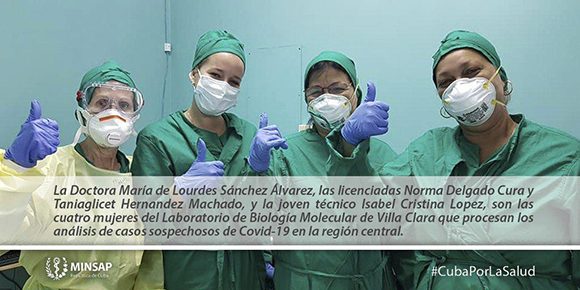
A hidden threat often triggers fear and anxiety on a personal level, in each of us. Knowing the possibly fatal effects of the threatening agent, multiplies the anguish and with it the tendency to seek solutions usually extreme and unlikely to be effective. If, in addition, these effects are visible, and they already affect others, then the cycle closes: perception of indiscriminate-risk increases the idea of vulnerability-uncertain resolution behavior. But even though it is known that in a pandemic situation, such as the one our planet is experiencing today, and our country is no exception, some are tempted to fall into the trap that distances them from appropriate behavior. There appear then, behaviors of neglect and denial (those that underestimate the situation, do not recognize it in its shocking reality, or hallucinate a certain invulnerability), and also behaviors that contain the necessary ones, but with a tendency to transcend them in excess, so much so that they can produce the opposite effect.
I believe that, in general, we have more in focus those who, due to an excess of confidence (personal and institutional), from an absolutely mistaken deduction (“nothing is going to happen here”, “I’m not going to be so unlucky”, and others similar), without taking into account the extra personal vulnerabilities. In other words, that is to say without the slightest perception of risk, ignore the essential measures of protection and care. I confess that some psychological traits make some more likely than others to build such an attitude. But nothing justifies or sustains it. We are what we are capable of doing with who we are. And that is how we build a better way of being.
But it is important to focus also on the other end of the bell of Gauss, that which describes what would be a normal distribution. Perhaps, by intensifying in order to attract attention, I mean those who hype-act the measures, with innovations of dubious value, moved from an excess of anxiety mobilization. When this happens, and the sense of basic care in the face of the pandemic is passed on, that which scientific knowledge dictates as essential actions, the way to face the situation seems to be helping us, but it may be harming us. Then, from a harmful mental disposition, any care seems little to us, and we can begin to produce not so careful care, which by its extreme nature, I insist, can be a generator of damage. Exaggerating is a common way of falling into what is being avoided.
Pandemics, in any of their forms, but the more aggressive they are, the worse they tend to promote among some people the idea, and not just the idea, but the deep belief, that along with the essential isolation of suspected and already victimized cases, the best thing is the total absence of links with everything around them. What, without a doubt, if this were the case, would have to be undertaken with supreme responsibility and at the right time. I therefore share a vigilance and a just and legitimate concern in this direction. A concern that is not stubborn and excessive, but constructive and sustained. In any case, legitimate, understandable and with the right to speak. Because only by talking will it be productive.
But I would like to refer to that action that implies having the unreasonable certainty that the enemy is anywhere, or rather everywhere, and that we have to find a hiding place at any cost and at any price. And I am not talking about the care and limitation of direct physical contact, which is usually one of the causes of the epidemic’s spread, but about the spiritual, identity-based sustenance of the forms of expression of human values. It would seem that for some people limiting behavior is synonymous with limiting, invalidating, the values they contain.
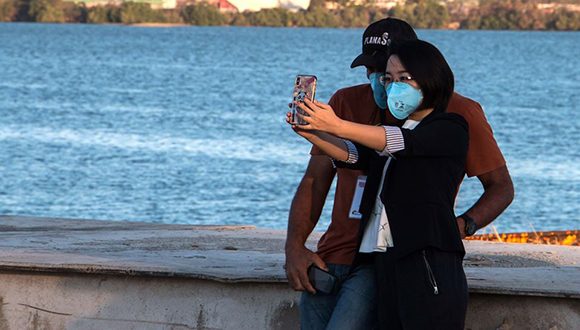
In bad weather, a good face. Photo: Abel Padrón Padilla/Cubadebate.
Let’s think about the challenge of distance. As a way to substantially cut the chain of transmission, scientists and professionals from many parts confirm the need to maintain a certain distance, they call for so-called social distance. What does this mean? In operational terms, maintaining a social distance means: not being in places where many people are, staying away from crowds of people; keeping a distance of about two meters from other people; not touching other people. Perhaps it is better to talk about physical interpersonal distance, to show that it is proposed to considerably limit physical contact, since it is one of the most powerful causes of the spread of the disease. Then, it is clear that shaking hands, hugging, kissing, these expressions of affection, love, friendship, companionship, tend to be substantially avoided in the current conditions of a pandemic.
But distance is not necessarily a problem. The problem is always separation. With you in the distance, it is not only a beautiful poetic phrase, but also an ethical attitude, a human relationship. García Márquez confirms it: “Distance is not a problem. The problem is the humans, who do not know how to love without touching, without seeing, or without hearing…” Ernesto Lecuona, in his beautiful Always in My Heart, convinces when he says that “nothing should be able to stop me from loving you”. The essence, is the essence, no matter how many different ways it is expressed. The essence of expressions of affection lies in the feelings and values that motivate them, and these can be lived, expressed and shared in many more ways.
Limiting is essential. But it is not necessary to limit, on the contrary, it is necessary to multiply, that spiritual, valuable substantiality that is expressed in this way. I am talking about the challenge of making the kiss, the embrace, the handshake felt, where it should not be physically realized. We know, paraphrasing Galeano now: good and authentic human feelings and values cannot be silenced. If they are not expressed in one way, it will be in another. But they cannot not communicate, they cannot stop interacting, co-living. To silence them would be to spread the maleficence of the pandemic.
The same goes for collaboration, solidarity, interpersonal relations, willingness to help and support. The axiom “all for one and one for all” applies, with undoubtedly different expressions, to these moments of indispensable precautions, but which cannot undermine the human essence. What we can achieve will always be more, and more forceful, if we do it together. That, on pain of being accused of being super-optimistic, is to emerge strengthened, resilient, from such violent and destructive adversity. That is, to take charge of an intelligent optimism.
A pandemic is not just a health, scientific, and political challenge. It is also, and above all from my professional perspective, an attitudinal challenge. It is our attitudes that protect us. It is they that get us through the situation. It is they who ensure that among the foreseeable consequences, there are also achievable conquests, just as “among the thorns, flowers are born”.
I defend, summon and fight for the self-care of each and every one of us. But, I need a self-care that implies, that includes the other (like a quantum reality, I could say some physicist). That self-care that knows how to take care of others, of ourselves. That which is not only personal responsibility, but human responsibility. That which commits us to preserve, and also to nourish and cultivate, our human essence, our condition as human beings. I say this because I know it professionally and scientifically, and I believe it deeply, “if I did not believe, what would I be?
But since temptations exist, since the human mind gives for the good and the not so good (even the bad), gives for the earthly and the divine, then it is necessary to be attentive, and to refer to our personal essence as human beings. I say more, to our national being, to our identity, to our being Cuban [somos cubanos]. So, to focus on our light zones and not on the dark ones, on what makes us a country where everybody is a brother, a partner, a friend, where anybody throws a line at anybody, where if we solve everybody, if we are participative, proactive, and extroverted (sometimes to diffuse limits), we are recognized as good people. Like that neighbor in my neighborhood, whom I observed from my balcony, who suffered the denial of a handshake with a buddy on the corner, and with genuine acceptance commented:
Who’s going to change what we are, let alone a virus, however many crowns he has?” And separating himself two meters away he said to the other: “Hand or no hand, I love you, my sister. You are on my team.”
You have to be careful. You have to take care of yourself. You have to let yourself be taken care of. You have to take care of each other. And we must also preserve the Cuban soul. “Let it not be said, brother, let it not be said.”

“Who’s going to change what we are, let alone a virus, however many crowns he has?” Photo: Rafael Martínez Arias/Facebook.
About “Those Dangerous Cuban Spies”
About “Those Dangerous Cuban Spies”
By Emilia Vera Da Souza
Translated by Stefanie Levi for CubaNews.
from PostCuba blog, who got it from the Argentine blog Opina Mendoza.

I suppose that it’s true…
Cuba, in the midst of this global health and economic crisis, decides to come spy and take some jealously guarded secrets [from] the concentrated centers of the elaboration of Argentinian thought, science and technology.
First, they must find where the centers where thought is elaborated, where science secretly investigates the most interesting issues for the advancement of world conquest and where they apply the technologies that will allow us to dominate planet Earth are located. Where? The Cuban spies ask themselves. And those of us that are not Cuban [ask ourselves], also.
Another problem for the Cuban spies. Who? What people are they that, in a hidden and surreptitious manner guard the most interesting issues of Argentinian intellectual development? Will these be in the communication media, well-camouflaged, where the most elaborate national thought is shown?
Will they be in companies that, so that nobody knows, they are paid poverty wages, but their owners have them well-guarded in impregnable dens, the results of their effort and they live publicly superficial and skin-deep lives in order that the Cubans do not take their best production?
Will the most advanced thoughts be in the political parties, hidden so that the Castro-communist ambition and egoism do not have access [to them]?
Will it be in the most recondite estates of justice, the secret that the Cuban spies seek so much, right there where the most elaborated of free thought is preserved, in order to better the lives of the citizens? And, so that it is not stolen, they do not show it, not even in the most hermetic places of the doctrinaire bureaucracy.
The most serious problem for the Cuban spies is to hide themselves. Everyone already knows that for a better performance of conspirational espionage, it is advisable to use a good cover-up, a good costume, scenery, a masquerade, makeup. And the Cubans lack precisely all of that.
They are recognizable at a distance by their tone of voice. They cannot speak without shouting. They usually have a skin color quite difficult to disguise. Nor are they able to minimize their peculiarities when they communicate: they always talk like Cubans, including when they speak in other languages.
They use easily identifiable insults: Come mierda (eat shit), hijeputa (motherfucker), que tu no sabes nada (that you know nothing), que ni lavas ni prestas el fregadero (you will not get anything), que te den candela (that they will give you fire), jinetera (?), concha de tu madre (your mother’s pussy), chico (dude) and other things like that.
They always substitute the letter “R” for an “L”. Because of this, they are able to spy on China.
It is also possible to recognize a Cuban by their style of walking. Carefree, as if tired, with a cadence of step that seems more like a dance move than [simply] a mode of moving.
And finally a bit of information: in order to recognize a Cuban spy it is advisable to put on some salsa music, a son or an island bolero, and if they start to move to the rhythm of the drums, they are undoubtedly Cubans.
Now… if they are well-seen, it can be observed that they usually walk with white overalls, stethoscopes hanging from their necks, with a little book in a bag and they take notes with very short pencils, spent from so much use.
They walk measuring the fevers of the miserable and sick in different corners of the world. They take care of children. But they take care of them so much that they do not have a single illiterate. But there is not one, not even a very little one that goes hungry.
They always circulate more closely to the places where the poverty of the skyscrapers nests. They move proudly, as if they have made a revolution. They shout calling attention and when they are silent, they also attract attention. They mention Fidel as if they know him.
They love Che and the Argentinians, as if they were the same. They hug wildly as soon as they make friends with someone and they leave from the island, full of consumable goods, according to foreign tourists, but, always, always, always each one (all) want to return to Cuba.
Betty Dodson: La adivina del sexo en solitario.
The New York Times
Betty Dodson: La adivina del sexo en solitario.
“Un orgasmo de verdad,” dijo la Sra. Dodson, “no importa de dónde venga, es algo de lo que se apropia la mujer.”
Por: Ruth La Ferla
26 de marzo 2020
Translation to Spanish by CubaNews. Traducción dedicada a Mileyda Menéndez y al Dr. Alberto Roque Guerra.
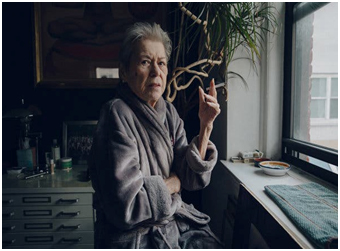
Crédito: Celeste Sloman para The New York Times.
¿Qué hace falta para hacer ruborizar a Gwyneth Paltrow? Pues resulta que basta con algunas clases explícitas sobre cómo entonar su suelo pélvico. Su instructora, Betty Dodson, artista convertida en educadora sexual y evangelista de la auto-estimulación femenina, exaltaba los beneficios del ejercicio kegeliano que, según sostiene, ayuda a provocar el orgasmo.
“Levanta, contrae, relaja,” insistía, causando que la Sra. Paltrow, vendedora de una vela de $75 llamada This Smells Like My Vagina [Esto Huele Como Mi Vagina] enrojeciera desde el mentón hasta la frente.
La escena es de “The Goop Lab,” una entrega de Netflix sobre el negocio de régimen de vida de la Paltrow (popular entre los ‘millennials’) que marcó un hito para la Dodson, pues le dio más visibilidad y, posiblemente, más relevancia de la que ha disfrutado desde que comenzó hace medio siglo a enseñar a las mujeres a alcanzar el orgasmo.
“Ahora hay educadoras más jóvenes,” dijo Annie Sprinkle, estrella porno de la década de 1970 devenida educadora sexual y desde hace mucho discípula de Dodson, “pero Betty todavía les puede dar dos vueltas.”
La Sra. Dodson, una perturbadora desde antes de que el término se pusiera de moda, ha ganado adeptas a su ideal de sexo positivo durante décadas, exhortando a las asistentes a los talleres Bodysex que fundó en los 70 a sentarse desnudas en su piso alfombrado, observarse mutuamente sus vulvas y aprender a masturbarse con eficacia.
Incluso antes de que el Dpto. de Salud de Nueva York afirmara “you are your safest sex partner” [Tú eres tu pareja sexual más segura] en un memo muy publicitado, la Sra. Dodson, que ya tiene 90 años, disfrutaba de un oportuno renacer. Su mensaje se hace sentir en su primer manual, “Bodysex Basics” [Fundamentos del Bodysex], con Carlin Ross como coautor, y en una versión reeditada de sus memorias de 2010, “Sex by Design: The Betty Dodson Story” [Sexo Intencional: La Historia de Betty Dodson]; en los populares talleres mensuales que ofrece en su apartamento de Midtown Manhattan (actualmente sustituidos por charlas colectivas por Internet); en el arte erótico que captó la atención del público por primera vez (sus imágenes de parejas copulando, que se exhibirán este año cuando el Museo del Sexo, del cual es consultora, reabra sus puertas); y en www.dodsonandross.com, la página web que mantiene junto con la Sra. Ross, su asociada comercial y presunta heredera de 46 años.
En “The Goop Lab,” la Sra. Ross yace bocabajo en la penumbra de un cuarto. Dodson está encima de ella, aplicándole suavemente aceite en los genitales mediante una técnica de masaje que se acelera gradualmente, y susurrando dulcemente mientras guía a la Sra. Ross hacia un eventual clímax.
Si la tierra tembló para la Sra. Ross, no se notó. Aparte de su respiración agitada y algún que otro estremecimiento por momentos, el auditorio no vio ni escuchó nada parecido a los fuegos artificiales sonoros y visuales que desde siempre han sido el puntal de la pornografía heterosexual.
Las Acusaciones Eran Falsas. Pero, ¿Podíamos Probarlo?

Si pareció insulso por comparación, dijo la Ross, “es porque no fue un orgasmo actuado.”
Antes de la propagación del nuevo coronavirus que obligó a los neoyorquinos a auto-aislarse, ella estaba chateando en la oficina-dormitorio donde ambas escriben y planifican sus proyectos.
Un pene dorado con alas, uno de los diversos premios curiosos de la Sra. Dodson, ocupa el lugar de honor en uno de los estantes superiores de un librero lleno de videocasetes que ella misma ha promovido—tales como “Viva la Vulva”—y de varios de sus trabajos iniciales, incluyendo “Sex for One: The Joy of Self-Loving” [Sexo para Uno: El Goce del Auto-amor], su trascendental primer manual (1987) sobre la masturbación femenina.
Herramientas de trabajo: Vibradores Magic Wand [Varita Mágica] que la Sra. Dodson utiliza en sus talleres.

Crédito: Celeste Sloman para The New York Times
La Dodson hizo su entrada vestida con una bata de baño desgarbada cuyo bolsillo superior está decorado con las letras B.A.D., “mis iniciales, Betty Anne Dodson,” dijo entornando los ojos antes de retomar su tema.
Claro que sí, el orgasmo puede ser ruidoso en ocasiones. “Sin embargo, por lo general los sonidos son mucho más guturales, profundos y animalistas,” afirmó. “Las piernas tiemblan, el cuerpo entero tiembla. Eso nunca lo he visto en pornografía.”
¿Por qué entonces tantas mujeres se sienten obligadas a montar un espectáculo enriquecido con una banda sonora de gemidos y gritos desgarradores? “Los hombres no quieren ver un orgasmo de verdad, quieren el pornográfico,” señaló la Dodson con mordacidad. “Es cosa del ego. Quieren ver el tipo de efecto que causan en una mujer.”
“Un orgasmo de verdad,” agregó, inclinándose hacia adelante para mayor énfasis, “no importa de dónde venga, es algo de lo que se apropia la mujer.”
He ahí un precepto básico de sus enseñanzas. “Tienen que dirigir” el coito, le pide a las mujeres encarecidamente: Asuman el mando, o sea, participen activamente en su propio placer. Si están con una pareja, “Llévenla a hacer lo que ustedes quieren,” dijo casi con furia. “Busquen la posición que ustedes quieren.”
En su opinión, la masturbación, sea manual o con dispositivos de baterías, es la piedra angular de la realización sexual, un catalizador del placer, y, más que eso, la base fiable de la independencia social y emocional.
“Mi instinto me dijo,” escribe en su monografía, “que movilidad sexual era lo mismo que movilidad social. Los hombres la tenían y las mujeres no.”
Su actitud de mando, subversiva e incluso incendiaria de principios de los años 70, no les sentó muy bien a algunas feministas que consideraban la noción de la Sra. Dodson sobre el apareamiento como mecánica y carente de conexión. Además, estaban demasiado concentradas en protestar por los abusos y las humillaciones que sufrían por obra de los hombres. “Siempre se estaban quejando,” recordó con irritación.
Otras fruslerías sobre el buró de la Dodson.
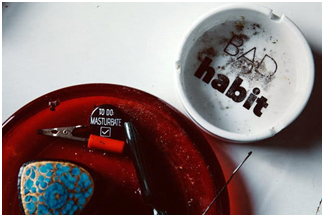
Crédito: Celeste Sloman para The New York Times
Respondió, imperturbable, con un modelo de concientización sexual. El repudio total al amor romántico era vital para su mensaje. “El romance es algo muy serio,” dijo en su apartamento. “Ya no es ese paradigma de que yo tengo que amarte y tú tienes que corresponderme.”
La Sra. Ross intervino: “El sexo puede ser juguetón, algo más parecido a, ‘Vamos a divertirnos.’”
Los jóvenes pueden enseguida a guías en la Internet tales como “How to Masturbate, Female Style: 8 Steps to Having Orgasms” [Cómo Masturbarse al Estilo Femenino: 8 Pasos para Tener Orgasmos] en Bustle, con instrucciones a mano, según escribe la autora, “porque conocer varias formas de producirse un orgasmo es una habilidad que todo el mundo debería tener.” Similar naturalidad respalda la afirmación un tanto simplista de Flo Perry, escritora e ilustradora británica de 27 años, en “How to Have Feminist Sex: A Fairly Graphic Guide” [Cómo Tener Sexo Feminista: Una Guía Bastante Gráfica], al afirmar que la masturbación no consiste en mucho más que “una forma de cuidado personal.”
No obstante, algunas de las más jóvenes parecen preferir el enfoque manual (si me perdonan) de la Sra. Dodson. Las lecciones que ofrece en la Internet tienen muchísimos clientes, de las cuales aproximadamente la mitad tienen entre 24 y 40 años, según la Sra. Ross. Pocas pueden responder al caudal de furia que caracteriza a los escritos de la Dodson y caldea su conversación.
Ella recuerda en su monografía el caso de una amiga de más edad que se le insinuó con manoseos a su mejor amiga. La Dodson agarró un cuchillo de encima de la tabla de cortar y le dijo con rabia, “Mejor vete antes de que te clave este cuchillo en el estómago.”
Sin embargo, en otros casos, la Sra. Dodson parece inexplicablemente cooperativa. En su escrito describe el encuentro en su patio trasero con un extraño semidesnudo, que se le acercó amenazadoramente por detrás. Sintiendo que el hombre estaba a punto de abalanzarse sobre ella, se dio vuelta, se zafó el cinturón, lo empujó hacia una silla y se le montó encima.
Es un incidente sorprendente de leer, sobre todo en la era del #MeToo, cuando la actitud aparentemente displicente de la Dodson suena a herejía. Pero ella no está dispuesta a retractarse. “Si Ud. no sabe artes marciales,” afirma, resistirse a un hombre durante un ataque “es inútil en la mayoría de los casos. Los hombres son más grandes y más fuertes. No me importa cuántas razones tiene Ud.: pelear no da resultado.”
Su relación con el sexo más fornido puede ser agriamente despectiva. “Los hombres son muy bidimensionales,” señaló. “Si algo tienen de interesantes es por las mujeres con las que han estado.”
La Sra. Ross le recordó a la Dodson que a la edad de setenta y tantos tuvo un amante de 25 años de edad, con quien vivió durante una década. Para la Sra. Dodson, el recuerdo aún despide chispas.
“¡Era tan bello!,” dijo entre nostálgicas chupadas a un Marlboro Light. “Tenía el cuerpo perfecto, hombros ancho, genitales de buen tamaño y huesos fuertes. ¡Ah, y olía muy bien! Con esa juventud y mucha agua y jabón.”
“Ya terminé con el sexo en pareja,” continuó. “Pero no rechazaría a un tipo bien parecido si entrara aquí ahora.”
No tener pareja no es motivo para abandonar el terreno, agregó, como si tal cosa, confiándome que todavía fuma marihuana ocasionalmente (“Sin ella no estaría aquí.”), a veces como preludio del sexo casual en solitario.
No tiene sentido recostarse a esperar ociosamente a que el deseo me tome la delantera.
“Sentimos el deseo una vez que nos excitamos,” dijo. “No esperes a que tu espíritu te mueva, porque nunca lo hará.”
Una versión de este artículo aparece impreso el 26 de marzo de 2020 en la Sección D, Página 1 de la edición de Nueva York, con el título: The Soothsayer of Solo Sex [La Adivina del Sexo en Solitario]. Solicite Copias | Periódico de Hoy | Suscríbase
https://www.academia.edu/28136066/Betty_Dodson_Sexo_para_uno
Mónica Baró Sánchez FB post
I found that if I paint my eyelashes I touch my eyes less. Same with the lips. Makeup, in general, can be a great ally in avoiding the coronavirus. Since the medical advice of not touching your face I can’t put it into practice rigorously, at least the aesthetic advice of not rubbing my eyes with mascara on my eyelashes can save me.
Who would have thought it: that the most vain people were the ones who in the end had the best chance of surviving. I have also discovered that I can’t stand antibacterial gel on my hands. It reminds me of when I used to eat a cold snack in elementary school and squirt soda down my hands and then get sick.
So far, this has been a day of important discoveries. I still haven’t managed to isolate myself. I had to leave in the morning. I’m sorry. Things that can’t be helped. But I came home quickly. I unrolled my yoga or pilates mat, depending on my craziness at the moment, and started doing some stretching exercises, which are very relaxing.
Before that, I cooked some chickpeas that were spectacular. I love to cook. I won’t go running in the afternoons on Fifth Avenue and the Malecón, nor will I see the sunsets in front of the sea, nor feel the salty breeze on my tongue. I’m ready to make my life miserable. I think so.
At least my house has huge plants and I keep incense, ginger and coffee for about two months. They say that in Spain, in quarantine, whoever has a dog can walk it. I wonder if having an imaginary dog will count, or that one will suddenly start barking.
DATEL March 19, 2020.
Translated and edited by Walter Lippmann for CubaNews.
Cubaphobia tries to politicize the pandemic

Is He a Dummy, or is He a Booby Trap?
Cubaphobia: the attempts to politicize the pandemic and -irrationally- to put Cuba as the focus and center of the contagion, has already appeared on the political scene in Miami
By Juana Carrasco Martin
Translated and edited by Walter Lippmann for CubaNews.

Esteban “Steve” Bovo, doesn’t look like a fool with his latest invention Author: Juventud Rebelde Published: 19/03/2020 | 10:50 pm
The new coronavirus has upset some people. The symptoms are a brutalization caused by bad intentions and Cubaphobia, translated into attempts to politicize the pandemic and -irrationally- to put Cuba as the focus and center of the contagion.
Of course, such bullshit could only come from Miami – a city contaminated for more than six decades by a visceral hatred and a vengeful desire for Cubans to disappear from the map, in order to appropriate this beautiful archipelago at any cost.
The most recent invention arrived with Twitter feeds and a letter sent to President Donald Trump by Commissioner Esteban “Steve” Bovo, asking him to place Cuba on the list of restricted travel to the United States, because “we need to take all preventive measures to protect Miami-Dade County and the state of Florida from the spread of COVID-19.
In Bovo County, the number of confirmed cases rose to 76 (March 18 data) and is increasing, as is the number of positive cases in all of Florida, which is almost 400, ranking among the highest in the 50 U.S. states.
Everyone knows, as do many Americans, including medical experts, and Democratic presidential hopefuls, say, that Trump did not act on SARS-CoV-2 in time, and that the public health care system — and, of course, the private health care system, plus the insurance companies — are responsive to the profits they can make, not the needs of their citizens.
Therefore, the records show that the United States is the country with the highest rate in the entire hemisphere, with 13,737 cases positive for COVID-19; 201 deaths and 108 recoveries. There are now 178 countries where the pandemic has made landfall.
However, the commissioner assures that Cuba has falsified its records, that it is rumored that the sick are Italians, that there have been no medicines in the country for a long time, and he dares to point out that “Cuba cannot protect its people, much less the tourists”.
Such is the blindness and bad temper of the aforementioned that he does not see how the world recognizes the benefits of the Cuban anti-viral recombinant Interferon alpha 2B, nor the gratitude of the passengers and crew of a cruise ship condemned to sail aimlessly through the Caribbean. [It wasn’t] until the humanism, solidarity and generosity of the largest of the Antilles and its people, opened a port and airport for them to return to the United Kingdom. A “I love you Cuba” was the best message from HM Braemar…
It would be good, in case they need it, to take into account that the Cuban pharmaceutical industry is prepared to treat thousands of possible patients with COVID-19, and our antiviral has already been successfully used in China.
The problem is that the Bovo is riding on the xenophobic bandwagon of the White House president, who never acknowledges his failures and looks for scapegoats in others, in order to also run an election campaign, since he hopes to be the mayor of Miami.
Nor does he care that if this extreme measure of cutting off travel between Havana and Miami were taken, it would totally sever the ties of Cuban families, a crime against humanity.
In China, the Battle Continues

In China, the Battle Continues
By Carlos Miguel Pereira Hernández
March 22, 2020
Translated and edited by Walter Lippmann for CubaNews.

Image: Cuba’s Blog in China.
As you know, there has been encouraging news of the last few days in China indicating substantial progress towards controlling the spread of the virus at the mainland level. Together with the strengthening of quarantine measures in major cities to stop the upsurge of new cases “imported” from abroad, are reflected important changes in the scenario we have experienced in recent weeks.
While cities such as Wuhan and others, considered epicenters or areas most affected by the epidemic could move towards a gradual relaxation of the quarantine measures imposed, others such as Beijing and Shanghai will have to remain under strict mandatory quarantine measures for those arriving by air from abroad. This will involve adjustments to air routes, with previous stops in other cities and even changes in the planned destinations of international flights, as part of the measures taken to control the upsurge of new cases arriving from abroad. Only six new cases were reported in Beijing in this way.
The situation in Hong Kong, Taiwan, and Macao still remains complicated, although the trend of increasing new cases is also showing an encouraging slowdown.
As it is known, the situation of all our colleagues and relatives in China has remained unchanged and uneventful. This is largely thanks to the joint efforts of all and the discipline maintained in complying with the measures indicated. However, while the situation here is improving after two very critical months, in the rest of the world, including our country, it is tending to worsen and become more critical. That is why we must redouble our efforts so as not to compromise what has been achieved, to avoid complacency and, at the same time, to prepare for a gradual return to normality.
These have been intense days. In addition to taking care of ourselves and preserving the health of our collective to the maximum, it has been necessary to deploy an intense battle for the truth in our networks. [We want] to close the way to the lies and manipulation that have proven to be more contaminating and lethal viruses than COVID-19 itself. From our pages in different platforms, we responded to incredulous and manipulative people about the successful use of nebulized applications of Cuban interferon manufactured in the Changheber plant, both from the preventive point of view by the Chinese medical staff before attending the patients and in the treatment itself of the patients infected with the virus.
Just a few days ago, when we were in the midst of that other battle, in an inexplicable way, Facebook, based again on its questionable algorithms, surprisingly deleted the official page of our embassy, from which we had been informing the world in an objective and systematic way about what had happened in these long months of the epidemic, the situation of our compatriots and the work of the diplomatic mission and the consulates in the People’s Republic of China.
However, Cuba’s commitment to the truth can never be erased, not even with all the clicks in the world. Barely 24 hours later, a new page was created from which we have followed and will continue to disseminate to the world our bilateral work, as well as reiterating our support and recognition to the Chinese people and government. [In addition, there are such] humanist acts as the decision to receive the British cruise ship infected with COVID-19 in Cuban territory to enable its passengers to return to their countries of origin, or the decision by China and Cuba to send medical brigades and to strengthen international cooperation as the only effective way to win this battle for life.
Taking into account the evolution of the situation in China, the embassy, the consulates general of Shanghai and Guangzhou, the Cuban representative offices and the Antillean personnel on official missions will continue to implement planned measures, which take into account the persistence of the danger and the call for strict compliance with measures to avoid contagion, in the midst of a gradual return to normality.
The medical post will remain in operation at the embassy headquarters, with the services of the medical team that is among us. It will continue to support us in the important task of providing medical guidance and advice, and also in complying with the medical protocol established since the beginning of the epidemic. Given the current epidemiological conditions of our country, this acquires even greater importance in order to ensure that nationals traveling to our country strictly comply with it. The impeccable implementation of that protocol has enabled dozens of our compatriots to return to the country in good health and no cases of contagion from China have been reported so far.
As it has been reported through different channels, all Cubans who plan to return to the country in the next few days must also strictly comply with the indicated medical protocol, for which they must contact the corresponding consular office and the medical post.
On the other hand, taking into account the evolution of the situation and the gradual reestablishment of face-to-face work by the Chinese institutions, starting tomorrow, Monday, March 23, the Cuban embassy and consulates in China will begin to resume their work in person, which will be done in a flexible manner according to the situation in each locality and in coordination with the respective heads of offices and consulates according to the priorities to be undertaken.
In the case of the Embassy, the following measures will be mandatory:
The mandatory use of masks. Once you arrive at the parking lot and before entering the offices, have your temperature taken at the medical post.
Hands and shoes will be disinfected at the entrance of the Embassy.
No inter-office visits will be allowed and only those meetings duly authorized and coordinated by the embassy management and with the measures duly taken.
Do not use common glasses, cups or spoons. Each colleague must have and use his or her own.
Meetings with external personnel will be analyzed on a case-by-case basis and with due authorisation and will be carried out in strict compliance with the measures indicated.
It is necessary that the offices are kept clean and aired at least twice a day for 30 minutes each time.
The Consular Office in Beijing and the Consulates General in Shanghai and Guangzhou will continue to provide services as before. Secretaries may be incorporated as long as services are provided for which they are required and with strict compliance with all measures, including the use of nasobuco on a permanent basis. The consulates must permanently have all the resources to ensure prevention and timely disinfection.
In the case of the group of students studying at different Chinese higher education institutions, general compliance with these measures will continue to be observed, and they will have to be adapted to the characteristics of each university and the decisions that will be announced by the corresponding authorities for the current school year. For the time being, the Chinese authorities recommend that students abroad do not return to China until otherwise indicated.
To the resident Cuban community, we reiterate that the embassy and its consulates will remain as they have been up to now, open and in permanent communication with you, to assist and support you in whatever may be necessary. As soon as the situation allows it, we will meet to take stock of what has happened during these days, in which the unity and cohesion of all becomes the main possible and necessary path towards the future.
To all of you, no matter the task or mission that has brought you to China or the migratory status you have today, I reiterate, on behalf of the leadership of our Embassy, that it has been a true honor to have shared these difficult days with you. We have made real the permanent call of President Miguel Díaz-Canel Bermúdez to “think as a country”. At the same time, I congratulate you for the exemplary attitude that has been maintained, which is allowing us to arrive little by little at the goal and to contribute our share in the battle that is being fought. I am not exaggerating if I say that you have been up to the task of our always hardened people and also of the brotherly and stoic Chinese people.
Reciprocal solidarity between Chinese and Cubans has always been present in the common history of our peoples. There are many and countless pages written throughout these years, in which each party has spared no time or effort in supporting and reaching out to the other, in the midst of situations of disasters, epidemics, media campaigns, and unprecedented manifestations of hatred and economic warfare.
These have also been days of deep solidarity and mutual support. Cuba has not only been among the leading countries in supporting and recognizing the epic battle waged by China, which has also been a crusader for the world. But China has also provided its concrete contribution in solidarity in many ways. These include the joint work of experts who have joined forces in the development of new medicines or therapies to confront a disease that, beyond announcements and predictions, remains dangerously unknown. Likewise, Chinese and Cuban doctors are working side by side today to confront COVID-19 in the region of Lombardy, Italy, one of the most affected regions in that country.
More recently, after the appearance of the first cases of the new coronavirus in the country, we have felt the human and supportive accompaniment of the Chinese government and authorities. They were among the first again, as well as their people, their companies, institutions and friends in general, to whom we extend our deepest gratitude. Increasingly, they contact us from all parts of China to send us their encouragement and support and their confidence in the capacity of our country and its health system to face the COVID-19.
As has already been announced by the Chinese authorities, an important government donation is ready, which will be joined by others that will generously send Chinese companies with a long history of links with the Island, including equipment, inputs, and others of great practical value that will reinforce the proven capacity of the Cuban health system to act, always focused on preserving the life of the people. In addition, a modest donation is being prepared by the community of Cuban residents through the Association of Cuban Residents in China “Ernesto Che Guevara”.
The battle continues, there is still much to be done. COVID-19 constitutes a global threat that must be faced with the cooperation and responsibility of all. In its prevention and containment, solidarity and international cooperation is the only possible way.
Beijing, 22 March 2020
Free Distribution of Nasobucos Begins

Free Distribution of Nasobucos Begins
This company belonging to the Ministry of Culture of Cuba, which produces and markets goods for the art industry, is today one of the institutions that have joined the production of nasobucos throughout the country.
By Redacción Cultural
March 23, 2020
Translated and edited by Walter Lippmann for CubaNews.

Photo: Germán Veloz Placencia
The National Council for the Performing Arts promotes the actions of Tecnoescena, a company belonging to the Cuban Ministry of Culture that produces and markets goods for the artistic industry, and which today is one of the institutions that have joined the production of nasobucos throughout the country.
According to José Martínez, its deputy director, this company is producing this add-on for free distribution, guaranteeing, fundamentally, the national schools of the artistic education system, as well as in the Theater and Dance centers of Havana, in some groups, among which is La Colmenita. Other cultural institutions, whose work will interact with the public,will also benefit, specifically in the area of tourism.
Tecnoescena is joined by three groups of artistic creators from the Cuban Fund for Cultural Goods (FCBC) in Ciego de Avila, who have made available to their province 5,000 nasobucos, made by them.
These timely initiatives are those that reinforce the action of the country’s main organizations, focused on the work of preventing the new coronavirus. (Cultural Editor)
Subscribe to Blog via Email
| M | T | W | T | F | S | S |
|---|---|---|---|---|---|---|
| 1 | 2 | 3 | 4 | 5 | 6 | 7 |
| 8 | 9 | 10 | 11 | 12 | 13 | 14 |
| 15 | 16 | 17 | 18 | 19 | 20 | 21 |
| 22 | 23 | 24 | 25 | 26 | 27 | 28 |
| 29 | 30 | 31 | ||||

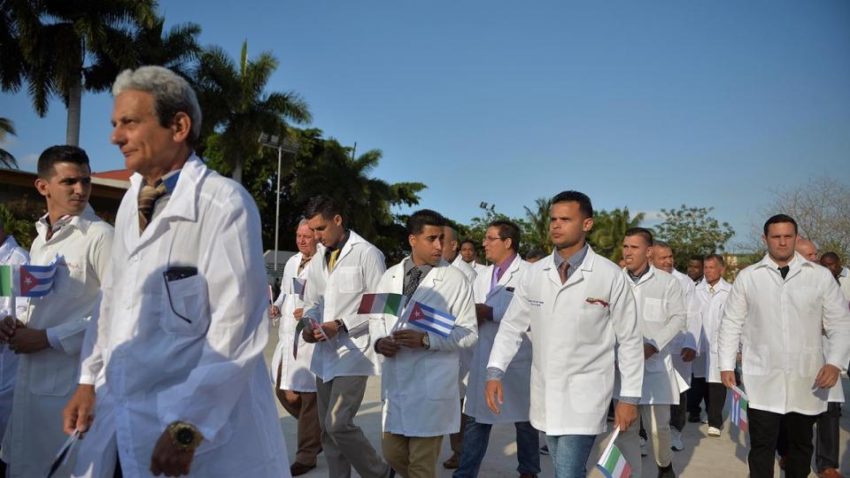

You must be logged in to post a comment.